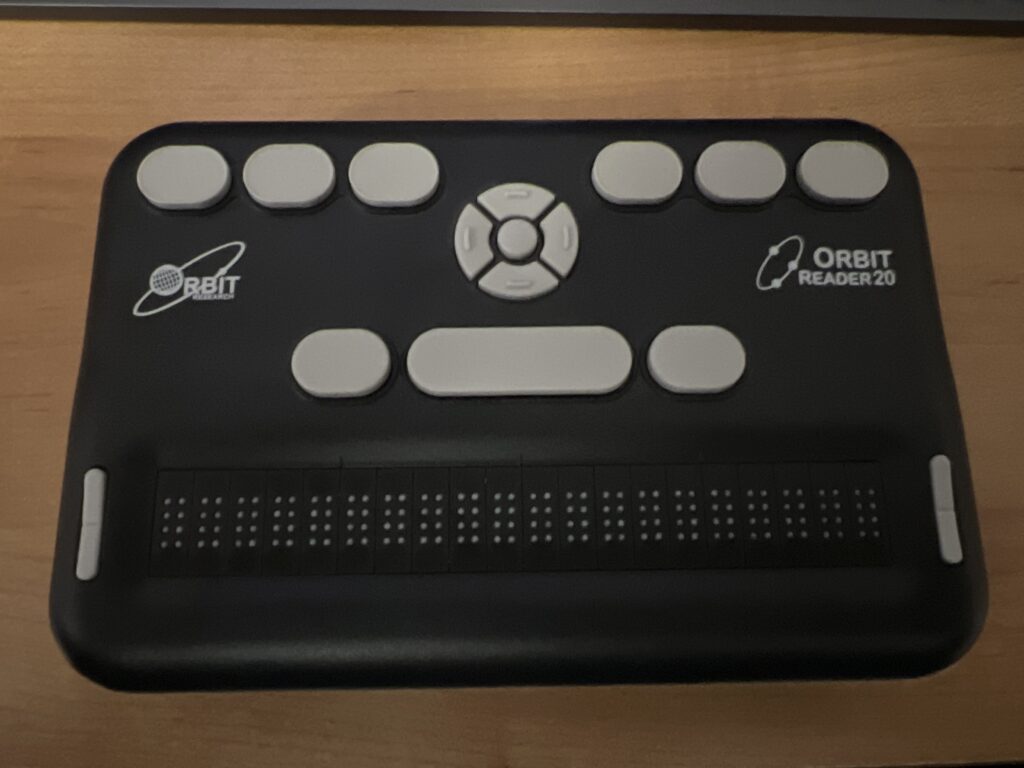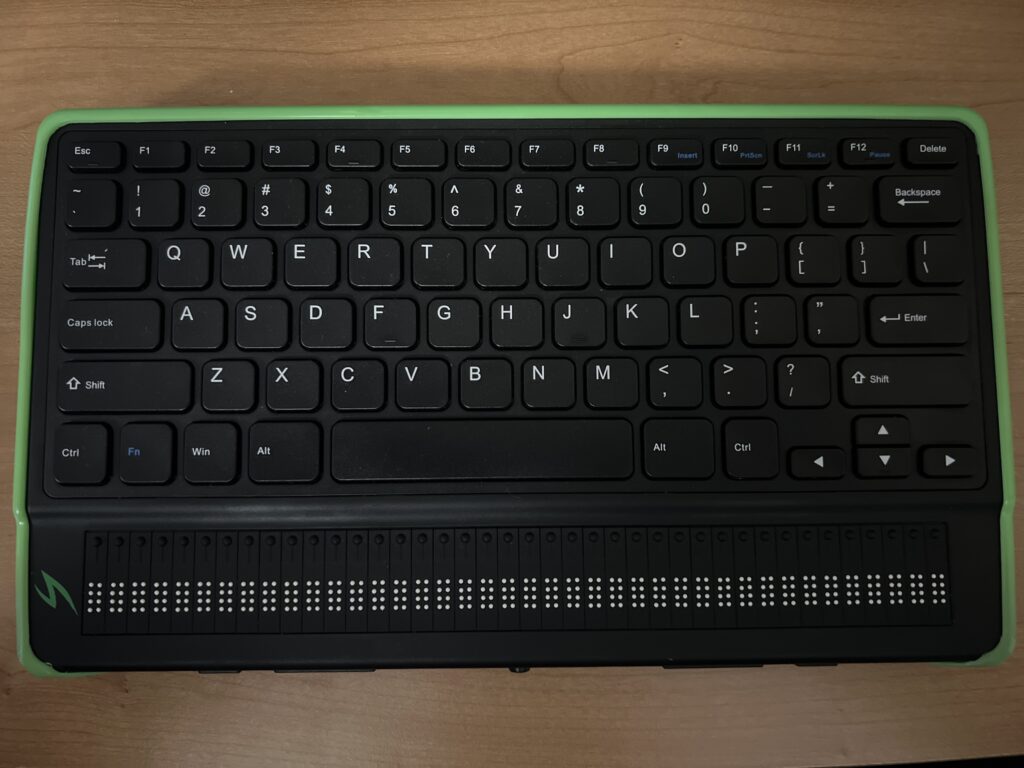As my sight deteriorates, I realise that I am becoming increasingly dependent on my hearing and how relentless it is to listen all the time. This dependency made me feel vulnerable, especially for remaining in employment. Like most people I was vaguely aware of braille, so I started to investigate how I could learn more about braille.
Braille is a simple dot pattern used to represent written language.
Invented by a French schoolboy in the 1820s, braille is an optimisation of an earlier code used by the French army for sending messages under the cover of darkness. Each braille pattern (known as a braille cell) fits neatly under a human fingertip.
The Braillist Foundation What is Braille? Page
After trying to follow the RNIB dot-to-dot course to learn braille without success, I heard about an online course running in January 2021 by the Braillist Foundation. So after just 8 short weeks I had learnt Braille Grade 1 and an introduction to Grade 2. Learning Braille takes time and patience, but it is possible, and for me it wasn’t as difficult to learn grade 1 as I had anticipated. The Braillist Foundation will be running another course in January 2022, and hopefully many courses in the future.
Refreshable Braille Display
I was keen to ensure I used my new braille skills, but I was struggling to make braille part of my routine. I invested in an Orbit Reader 20 refreshable braille display. The RNIB distribute the Orbit Reader 20 within the UK. It ships with a diverse collection of books preloaded on an SD card. Furthermore, additional books can be downloaded for free from RNIB Reading Services. I can now read books on the Orbit Reader, although very slowly.

Braille Letters and Labelling
For my birthday, my best friend sent me a letter in braille and receiving a letter in braille was amazing. Being able to read a letter by myself encouraged me to continue and ensure braille becomes part of my life. My friend also gave me a braille labeller which has allowed me to include braille around the house. For example, the oven now has labels that allow me to check if it is set to oven or grill. My family no longer have the disappointment of grilled pizzas or baked cheese on toast.
Learn Braille for Work
I have Freedom Scientific Fusion (ZoomText & JAWS) which supports connecting braille displays to a Windows computer. As I adjust to the screen reading capabilities of JAWS, I have realised that I can’t listen to the screen reader and take part in a conversation at the same time. The logical solution is to improve my braille skills and therefore, I applied to Access to Work for an assessment.

Thanks to my employer and Access to Work, I was able to get a Mantis Q40 braille display. The Mantis is the only qwerty keyboard braille display on the market. I have used a qwerty keyboard for over 30 years and learning a Perkins keyboard was unlikely to get to the same level of typing efficiency. I switched over to the Mantis immediately and now I have braille at my fingertips, while retaining my typing efficiency.
Should you learn Braille?
Only you can answer that question, but for me it was the right choice. While I am only at the start of my braille journey, it has already provided options I wouldn’t have had without braille. I no longer need to listen to everything, and I hope to be able to multi-task on conference calls again soon.
Tell me what you think in the comments below or on X @timdixon82


7 replies on “My Journey to Learn Braille in 2021”
Tim you have always been amazing but your resilience is inspiring. Well done you 🏆
Thanks Mo
Mate you are an inspiration! Well done on getting to this point, I’m confident with your dedication and enthusiasm you can become fluent. Keep the posts coming!
Thank you Buddy.
Hi Tim,
Great to read your story. After 6 months or so how are you getting on with the Orbit Reader?
Did you find any tips or tricks that made it easier? I’ve noticed the Orbit Reader comes with Adult and Children’s books, and I’m tempted to start with a couple Children’s books to ease myself in and hoping to get started this week.
Thanks
Thanks for commenting James.
I must admit I am not using the Orbit often.
I have used it to read children’s books which helped me try and bring it into my daily routine.
It’s a catch 22. You need to read to get faster, but you need to be fast to use it regularily. Hence I end up with screen readers most of the time.
It would be great to hear how you get on.
I think it’s good for people to share their stories. Not just about how they may have lost their vision, but also the technology that has helped them. This gives the newly diagnosed person encouragement that life does go on after sight loss, and what can help them in a darker world.